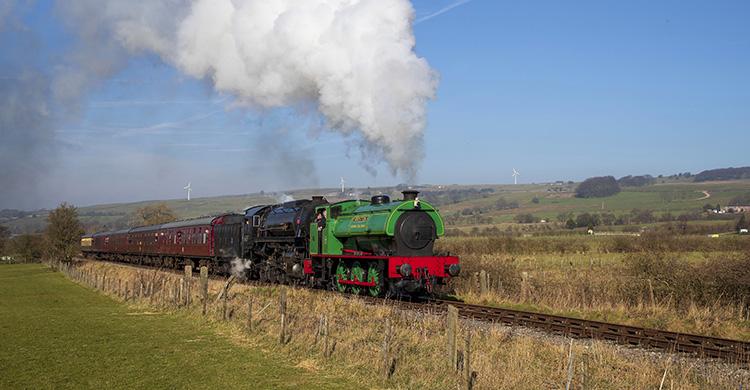It may surprise you to know that there are well over 200 heritage railways operating up and down the United Kingdom.
They range from large outfits such as North Yorkshire Moors Railway, which boasts around 120 full-time employees and can call on the services of up to 700 volunteers to operate 18 miles of their own track as well as daily operations on Network Rail’s Esk Valley line to Whitby; to much smaller concerns such as Yorkshire Wolds Railway which operates with a couple of dozen enthusiastic volunteers, a short distance of track, a small diesel locomotive and a bit of rolling stock. All have unbounded enthusiasm and ambition.
Standard gauge heritage railways sometimes operate passenger trains heavier than those on the mainline with six, seven or eight carriages and a fire breathing steam locomotive (or heritage diesel) which hauls the carriages – for good safety reasons - at a maximum speed of 25mph.
There are significant risks which must be controlled and all heritage railways must have a proportionate Safety Management System (SMS). This will contain their requirements for Competency of Safety Critical Staff, Operations, Maintenance of Traction and Rolling Stock, Track, Signaling and more. So when we go along to inspect a railway we concentrate on the SMS to establish if it is fit for purpose and if so, is the railway complying with it.
In October 2018, we inspected West Somerset Railway, which has run along 25 miles from near Taunton to Minehead in Somerset for more than 40 years. Unfortunately, we discovered a number of areas of concern particularly around maintenance of track and structures, record keeping and deficiencies in the overall SMS.
Senior management took the bold step of extending the line’s planned winter closure period to allow them to deal with the issues raised by our inspection. Throughout that period they actively engaged with us explaining the steps they have taken and detailing what they intend to do to deal with ongoing issues.
On 30 March this year, they reopened and we wish them every success in the future – but we’ll be watching them and every other operator - to ensure that their standards of safety are what every passenger has the right to expect.



